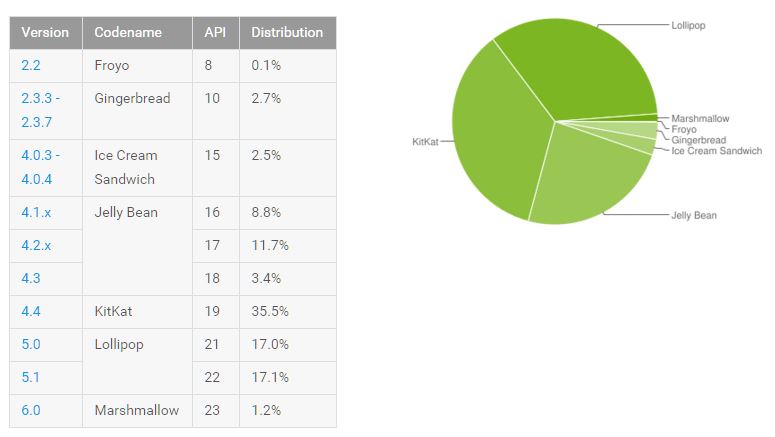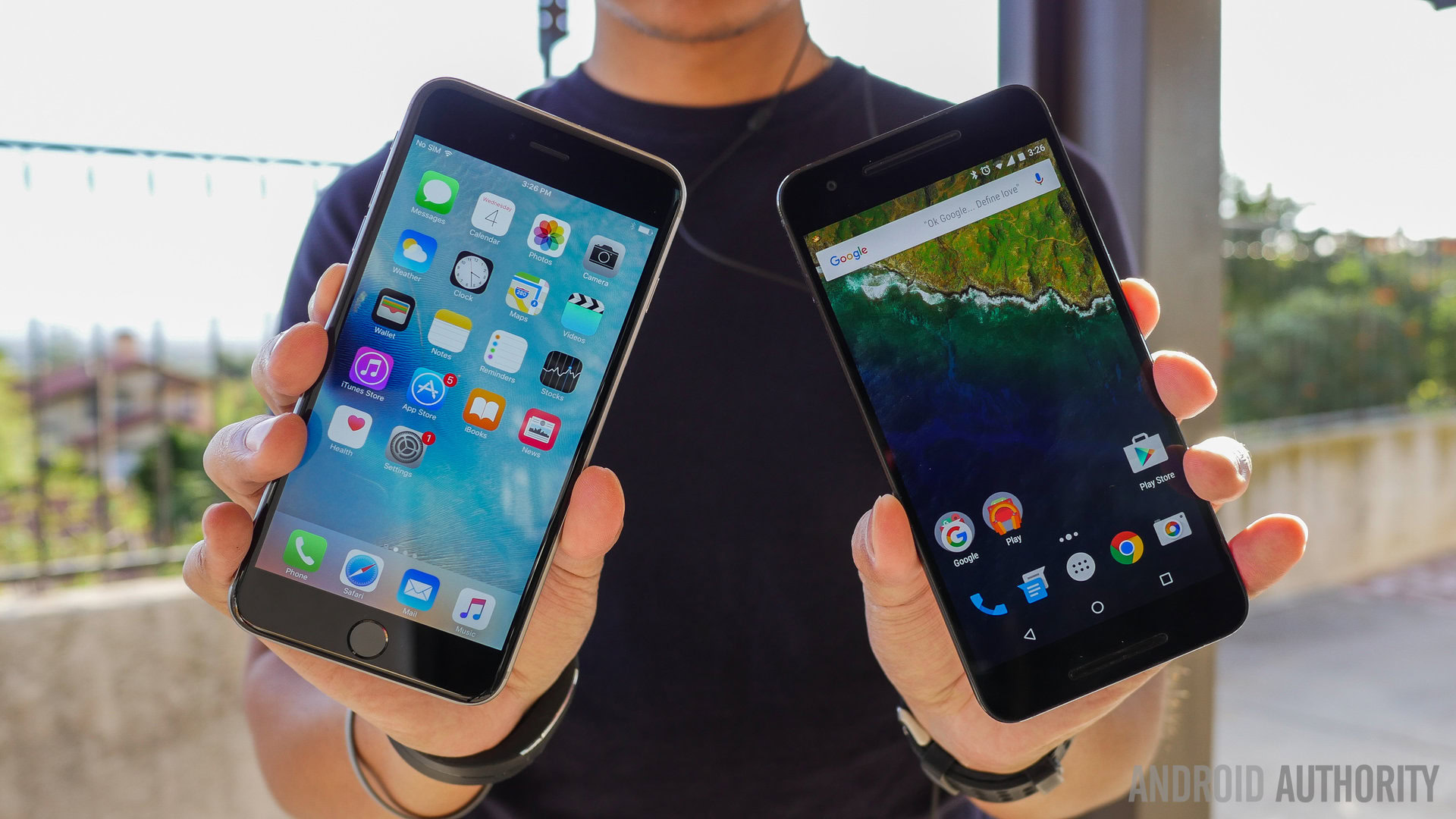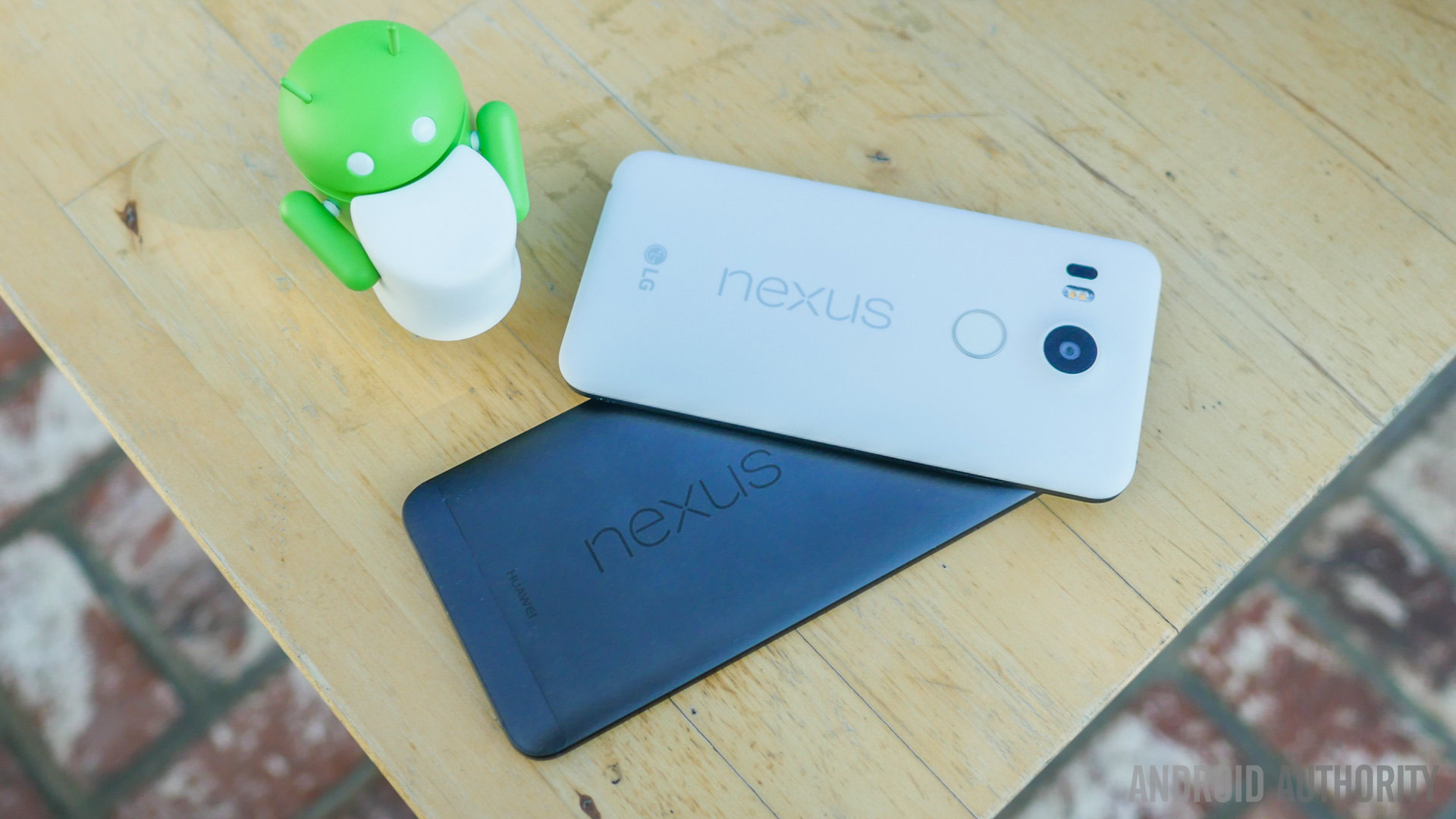Affiliate links on Android Authority may earn us a commission. Learn more.
New Android distribution figures show Marshmallow cresting 1%

Android just released the new distribution numbers for February 2016, and Marshmallow has finally crossed the 1% threshold. January saw a .5% increase from the close of 2015, bringing Marshmallow’s usage to 1.2%. This figure looks miniscule, but when you think about it, moving from .7% to 1.2% is a pretty big leap. You know. For Marshmallow.
I mean, it’s not like iOS is able to roll out updates that much faster. A quick look at their distribution numbers and you’ll immediately see… Oh, yikes. 77.3% of all iPhones are running the latest version, iOS 9. 13.3% are running iOS 8, and a slim 8.4% are running iOS 7. Once you go back three versions of Apple’s mobile operating system, the distributions drop below 1%.

Compare this to the Android ecosystem: three versions back is Jelly Bean, and our old friend JB is still being used by 23.9% of devices. Lollipop is sitting pretty at 34.1%, but the biggest piece of the pie goes to KitKat with 35.5% of the distribution. As it stands, more than twice as many people are currently running Gingerbread (2.7%) than are running Marshmallow.
The fragmentation of the Android ecosystem is something that is becoming an increased concern for the operating system’s owner Google. Where Apple has the edge in this battle is total conformism. The company has complete control over the way their devices are designed, so updates to the operating system only have to be tweaked to match a relative handful of specs. The Android ecosystem, however, is an incredibly diverse world with few strictures and limits. This makes rolling out updates exceedingly tedious and drawn-out. This is just one reason why Google has elected to make the Nexus line very ‘Apple-like.’

In full disclosure, the figures used here for iOS distribution rates are not officially provided by Apple, but are the work of a developer tracking the versions being used for his popular audiobook apps. However, these percentages are generally regarded as being more or less representative of iOS usership as a whole.
What are your thoughts regarding these new distribution figures and Google’s concerns over fragmentation? What solutions are at the company’s disposal? Let us know your thoughts in the comments below!